Rodolfo de Olea : “El Elefante”
“El Elefante” Cadiz pattern by Rodolfo de Olea Viaña, 1899.
Rodolfo de Olea Viaña (active 1891-1905) inherited a well-established playing card factory from his father, Segundo de Olea Lepiani, in 1891. Inscriptions on the elephant trademark, as well as on other advertising materials, were updated to notify of the succession. The factory address was at Comedias No.12, Cadiz. In around 1895 Rodolfo de Olea commenced using photolithography which produced a finer quality product, although packs continued to be coloured by the older method using stencils.
The Olea playing card factory exported cards around the world, in particular to South American markets, and was awarded numerous gold, silver and bronze medals at exhibitions which are illustrated on several cards.
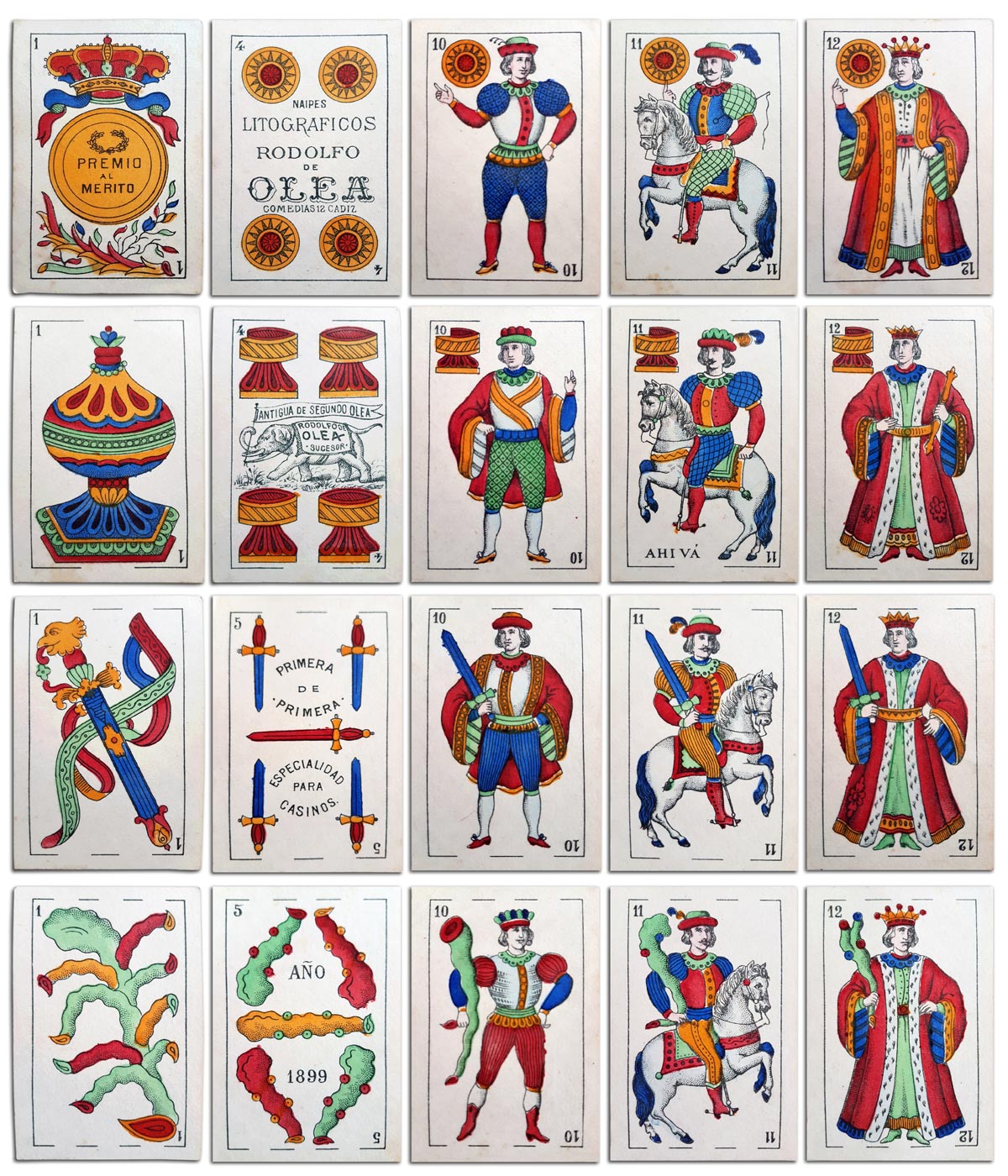
Above: “El Elefante” deck by Rodolfo de Olea Viaña, Cadiz, dated 1899. This edition was printed by lithography, as stated on the four of coins, but coloured using stencils. All images courtesy Ib Hilmar Hedegaard.
Alternative presentation
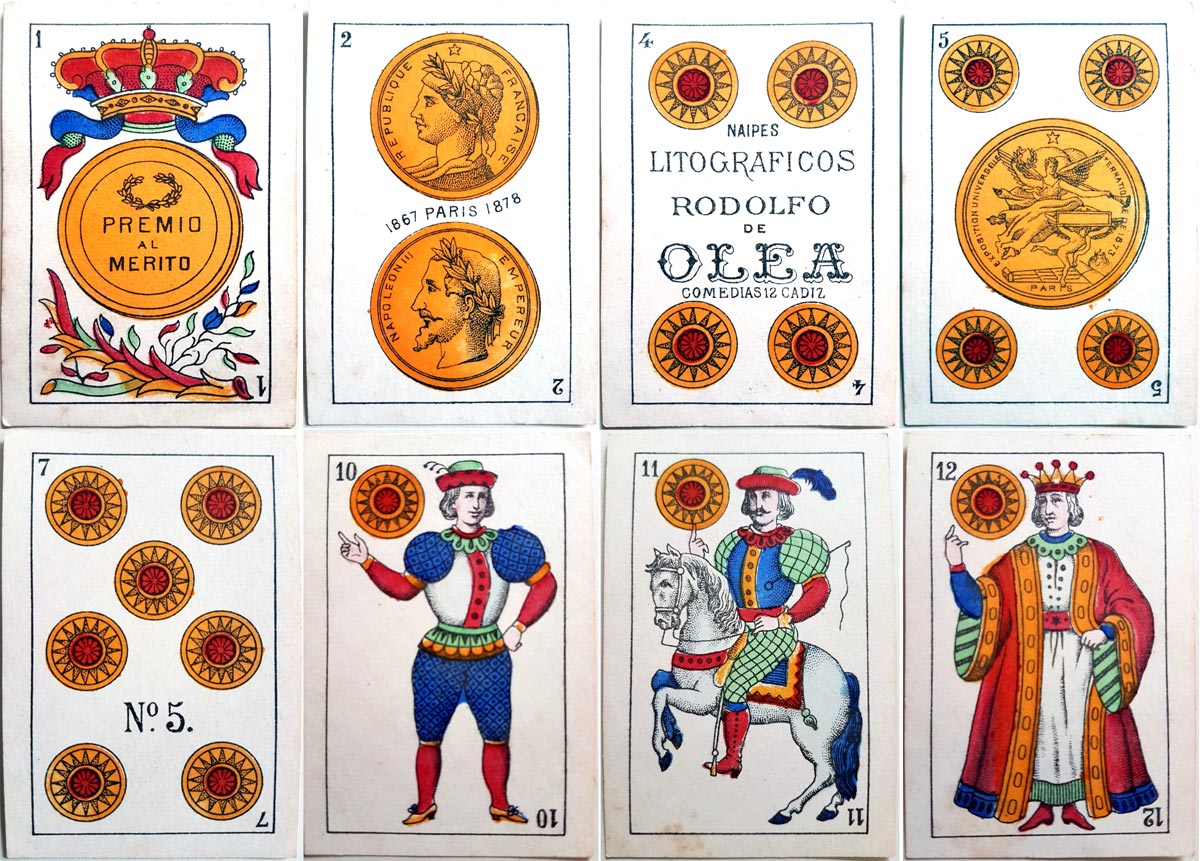
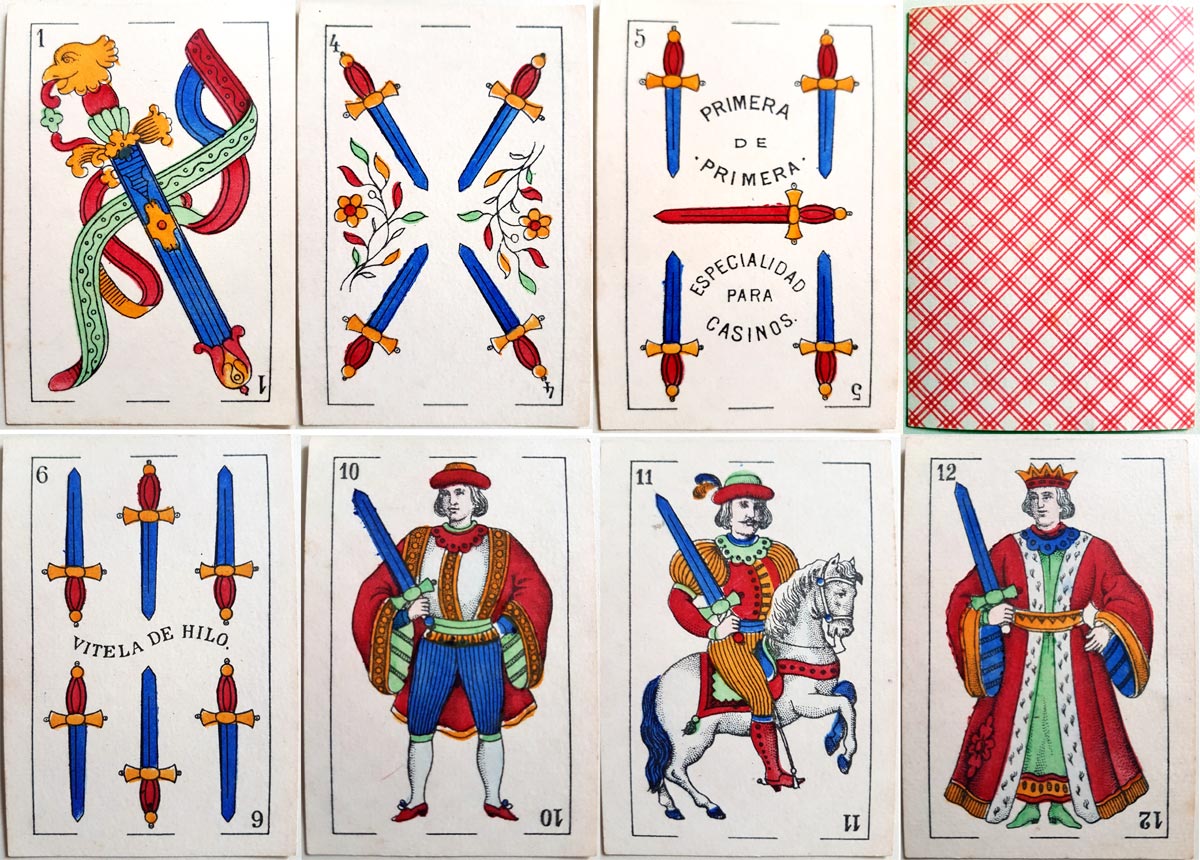
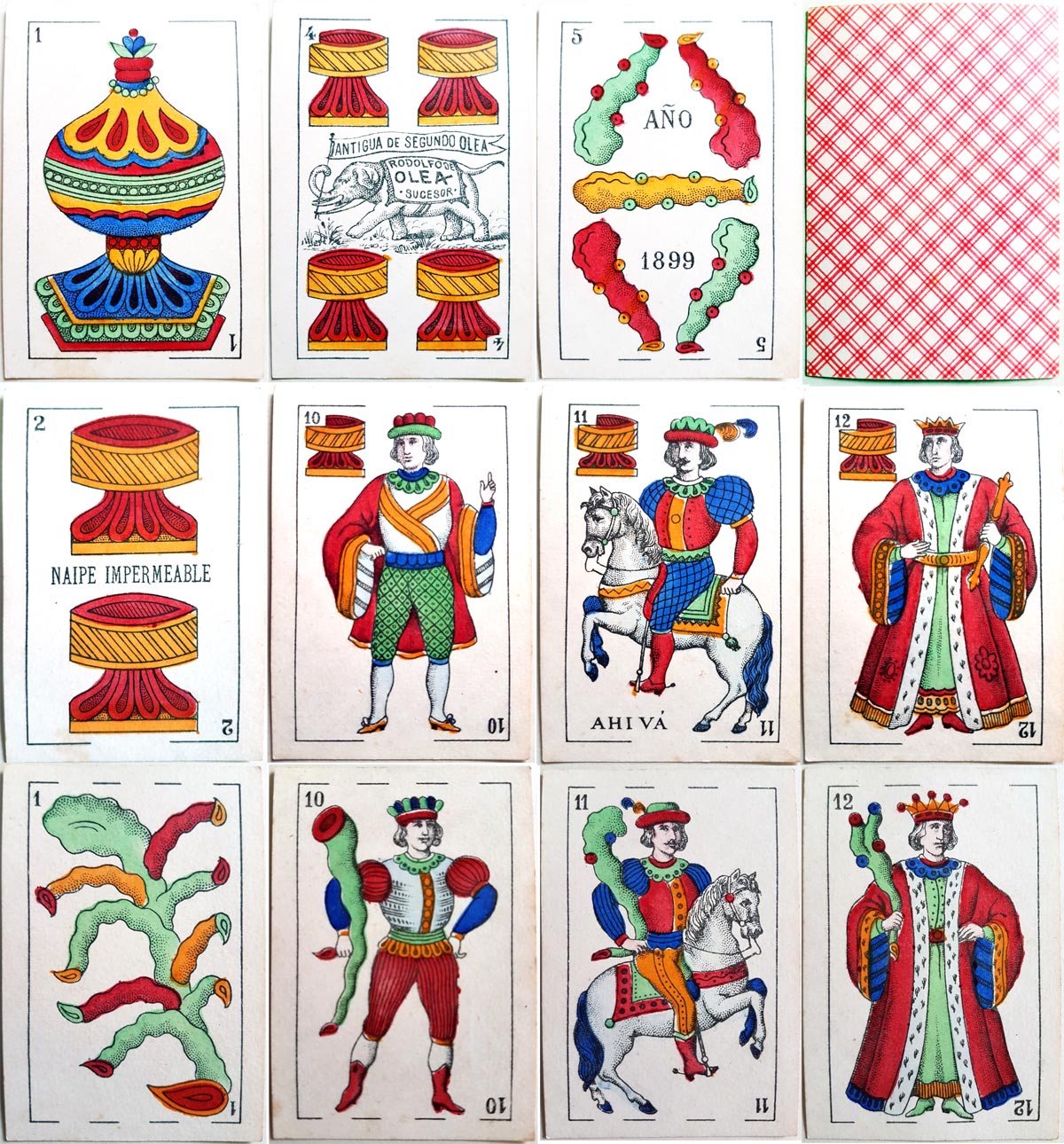
Towards the end of the 18th century, with the rise of industrialisation, the need for a more powerful source of energy was felt. Steam engines provided the answer, and were employed in playing card manufacture even into the early 20th century.
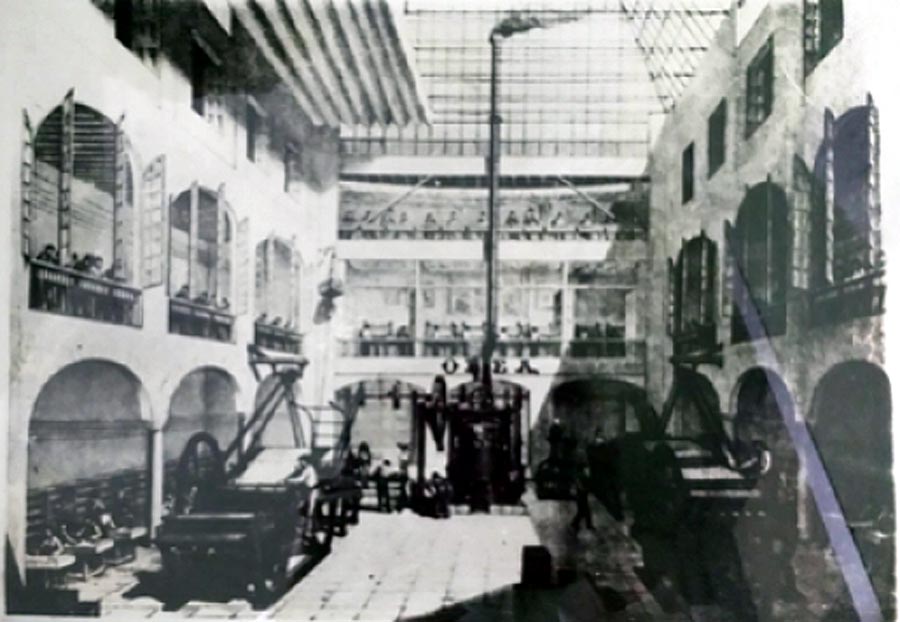
Above: interior view of the Olea playing card factory showing steam-powered presses and workers engaged in the various stages of manufacture, late 19th century. © El Fenicio, 2015.
Rodolfo de Olea’s son, Rodolfo de Olea Mora (1874-1926) and his step-brother Segundo de Olea Aguilera (1893-c.1950) also manufactured playing cards. See: Segundo de Olea Aguilera►

Above: other members of the extended family were also card makers.
REFERENCES
Pérez González, Alberto: Los Naipes de Cádiz, in LA SOTA no.13, Asescoin, Madrid, October 1995
Portillo, Jose Alvarez: La fábrica de cartas e imprenta Olea, in El Fenicio, Cadiz, December 26th, 2015 (www.elfenicio.com)
By Simon Wintle
Spain • Member since February 01, 1996 • Contact
I am the founder of The World of Playing Cards (est. 1996), a website dedicated to the history, artistry and cultural significance of playing cards and tarot. Over the years I have researched various areas of the subject, acquired and traded collections and contributed as a committee member of the IPCS and graphics editor of The Playing-Card journal. Having lived in Chile, England, Wales, and now Spain, these experiences have shaped my work and passion for playing cards. Amongst my achievements is producing a limited-edition replica of a 17th-century English pack using woodblocks and stencils—a labour of love. Today, the World of Playing Cards is a global collaborative project, with my son Adam serving as the technical driving force behind its development. His innovative efforts have helped shape the site into the thriving hub it is today. You are warmly invited to become a contributor and share your enthusiasm.

Leave a Reply
Your Name
Just nowRelated Articles
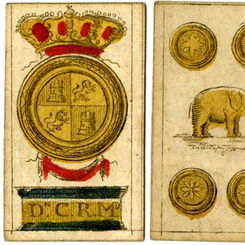
Miniature spanish-suited playing cards
Pack of 48 miniature spanish playing-cards published by C R.
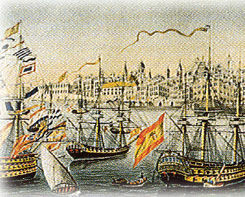
Cádiz Pattern playing cards
A popular Spanish playing card pattern widely exported to Spanish-influenced markets.

Naipes del Salitre
Playing cards recovered from the Northern Chile saltpetre workers. The cards are mostly from Spanish...
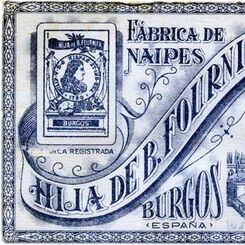
Hija de B Fournier
Having started out as Fournier Hermanos, Burgos in 1860, the company remained in the Fournier family...
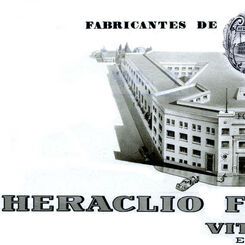
Heraclio Fournier S.A.
Founded in 1868, today it is part of Cartamundi.
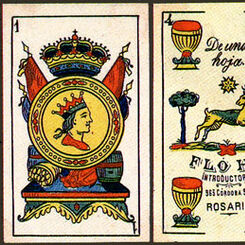
Fló Hermanos y Compañía, importers of playing-cards, Argentina, 1860-1910
Fló Hermanos y Compañía, importers of playing-cards, Argentina, 1860-1910.
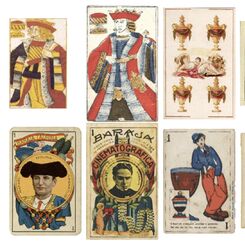
Spanish Playing Cards ~ La Baraja Española
Spain has played a pivotal role in the history of playing cards in Europe and Latin America.
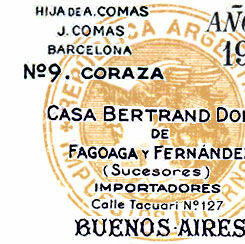
Naipes Coraza, Comas, Barcelona, 1940s
Naipes Coraza, Hija de Antonio Comas, Barcelona, 1940s.
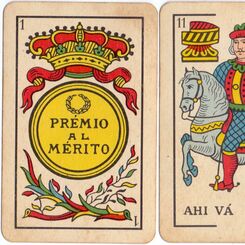
Cards for export to Peru by Heraclio Fournier
'El Caballo' brand (No.5P) playing-cards manufactured in Spain by Heraclio Fournier S.A. especially ...
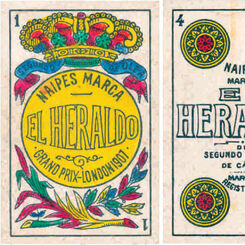
Naipes El Heraldo, Cádiz
“El Heraldo” brand by Segundo de Olea Aguilera, Cadiz.
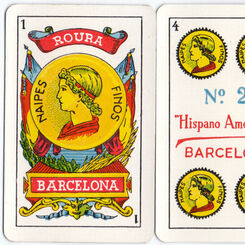
Naipes Finos No.21
Naipes Finos No.21 "Hispano Americana", in the Castilian style, by Juan Roura, Barcelona, c.1940.
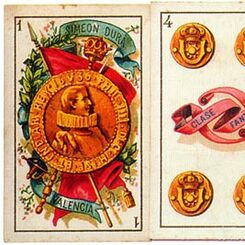
Simeon Durá 1871-1940
Simeon Durá of Valencia was one of Spain's most distinguished playing card manufacturers, flourishin...
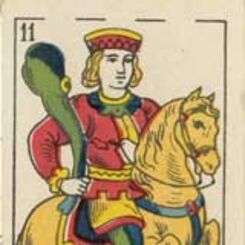
Sebastian Comas y Ricart, Barcelona
“El Ciervo” standard Catalan-type pack made in Barcelona by Sebastian Comas y Ricart, c.1905-10.
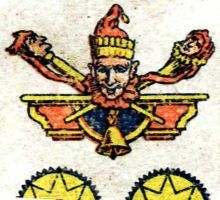
Moliner - Burgos
Cards from a "Nº 4" pack manufactured by Antonio Moliner, Burgos.
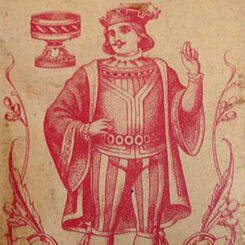
Naipes Comas
Naipes Comas 1797-1992.
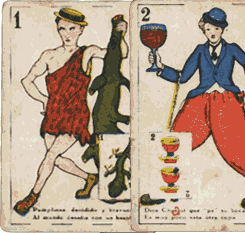
Baraja Artistas del Cine Mudo
Baraja Artistas del Cine Mudo, c.1926.
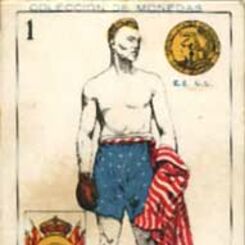
Baraja Boxeo
Baraja de Boxeo, c.1930.
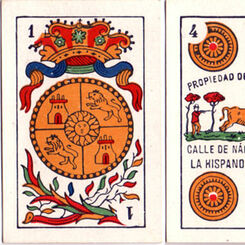
Juan Roura, Cadiz pattern
Cádiz type playing cards made by Juan Roura for export to Spanish-speaking countries.

About Heraclio Díaz
Heraclio Díaz lives in the Canary Islands (Spain).

Naipes Cisne
Although the wrapper gives the manufacturer's address in Sevilla, Spain, the cards were most likely ...
Most Popular
Our top articles from the past 60 days


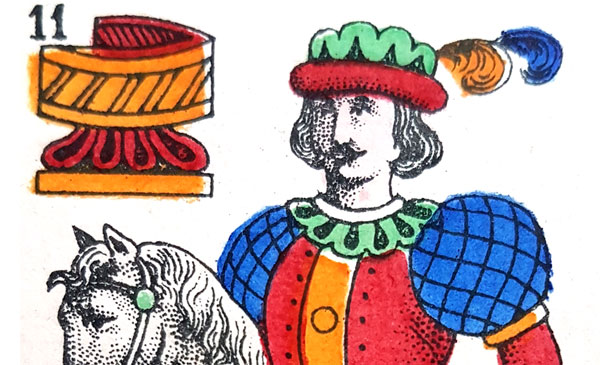
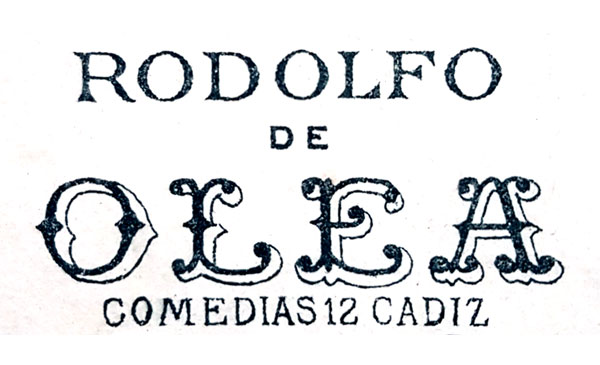
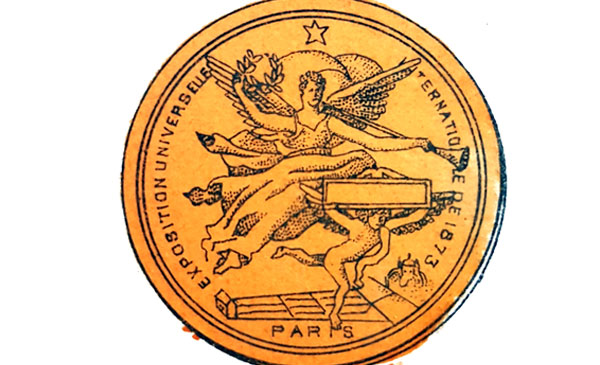
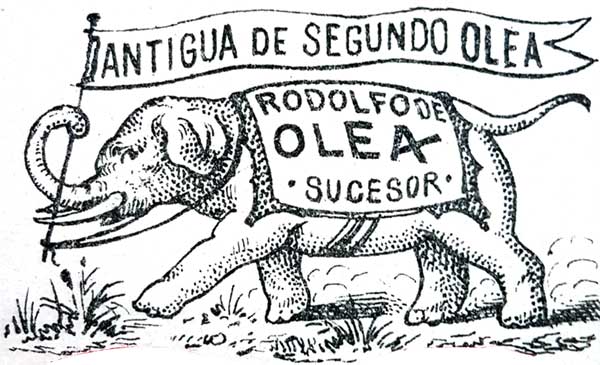
 Your comment here. Your comment here. Your comment here. Your comment here. Your comment here. Your comment here. Your comment here. Your comment here. Your comment here. Your comment here. Your comment here. Your comment here. Your comment here. Your comment here. Your comment here. Your comment here. Your comment here. Your comment here. Your comment here. Your comment here. Your comment here. Your comment here. Your comment here. Your comment here. Your comment here. Your comment here. Your comment here. Your comment here. Your comment here. Your comment here. Your comment here. Your comment here.
Your comment here. Your comment here. Your comment here. Your comment here. Your comment here. Your comment here. Your comment here. Your comment here. Your comment here. Your comment here. Your comment here. Your comment here. Your comment here. Your comment here. Your comment here. Your comment here. Your comment here. Your comment here. Your comment here. Your comment here. Your comment here. Your comment here. Your comment here. Your comment here. Your comment here. Your comment here. Your comment here. Your comment here. Your comment here. Your comment here. Your comment here. Your comment here.




















